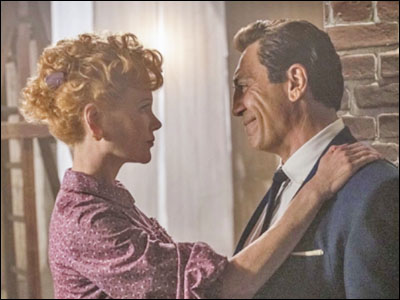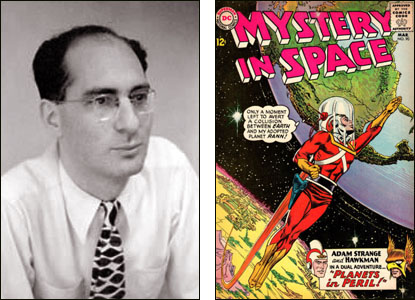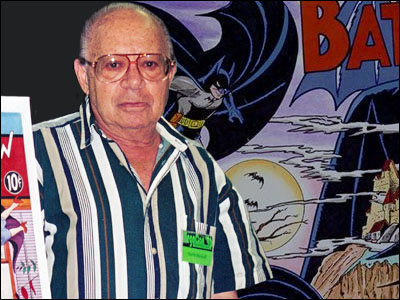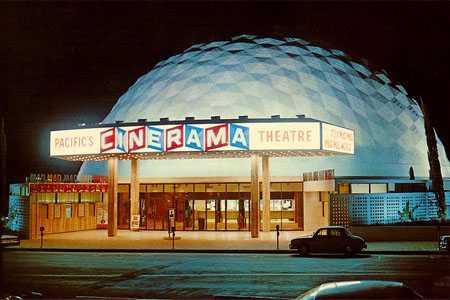This is the most popular thing I've ever posted on this weblog. In fact, it's so popular that proprietors of other sites have thought nothing of just copying the whole thing and posting it on their pages, often with no mention of me and with the implication that they are the "I" in this tale. Please don't do that — to me or anyone. By all means, post a link to it but don't just appropriate it and especially don't let people think it's your work. This is the season for giving, not taking.
Yes, it's true…and I was very happy to learn from two of Mel Tormé's kids that their father had happily told them of the incident. Hearing that was my present…

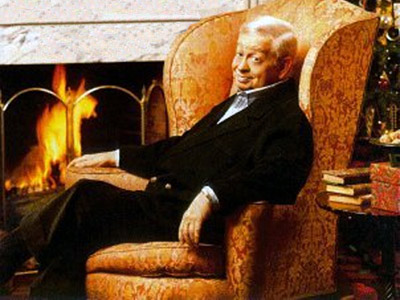
I want to tell you a story…
The scene is Farmers Market — the famed tourist mecca of Los Angeles. It's located but yards from the facility they call, "CBS Television City in Hollywood"…which, of course, is not in Hollywood but at least is very close.
Farmers Market is a quaint collection of bungalow stores, produce stalls and little stands where one can buy darn near anything edible one wishes to devour. You buy your pizza slice or sandwich or Chinese food or whatever at one of umpteen counters, then carry it on a tray to an open-air table for consumption.
During the Summer or on weekends, the place is full of families and tourists and Japanese tour groups. But this was a winter weekday, not long before Christmas, and the crowd was mostly older folks, dawdling over coffee and danish. For most of them, it's a good place to get a donut or a taco, to sit and read the paper.
For me, it's a good place to get out of the house and grab something to eat. I arrived, headed for my favorite barbecue stand and, en route, noticed that Mel Tormé was seated at one of the tables.
Mel Tormé. My favorite singer. Just sitting there, sipping a cup of coffee, munching on an English Muffin, reading The New York Times. Mel Tormé.
I had never met Mel Tormé. Alas, I still haven't and now I never will. He looked like he was engrossed in the paper that day so I didn't stop and say, "Excuse me, I just wanted to tell you how much I've enjoyed all your records." I wish I had.
Instead, I continued over to the BBQ place, got myself a chicken sandwich and settled down at a table to consume it. I was about halfway through when four Christmas carolers strolled by, singing "Let It Snow," a cappella.
They were young adults with strong, fine voices and they were all clad in splendid Victorian garb. The Market had hired them (I assume) to stroll about and sing for the diners — a little touch of the holidays.
"Let It Snow" concluded not far from me to polite applause from all within earshot. I waved the leader of the chorale over and directed his attention to Mr. Tormé, seated about twenty yards from me.
"That's Mel Tormé down there. Do you know who he is?"
The singer was about 25 so it didn't horrify me that he said, "No."
I asked, "Do you know 'The Christmas Song?'"
Again, a "No."
I said, "That's the one that starts, 'Chestnuts roasting on an open fire…'"
"Oh, yes," the caroler chirped. "Is that what it's called? 'The Christmas Song?'"
"That's the name," I explained. "And that man wrote it." The singer thanked me, returned to his group for a brief huddle…and then they strolled down towards Mel Tormé. I ditched the rest of my sandwich and followed, a few steps behind. As they reached their quarry, they began singing, "Chestnuts roasting on an open fire…" directly to him.
A big smile formed on Mel Tormé's face — and it wasn't the only one around. Most of those sitting at nearby tables knew who he was and many seemed aware of the significance of singing that song to him. For those who didn't, there was a sudden flurry of whispers: "That's Mel Tormé…he wrote that…"
As the choir reached the last chorus or two of the song, Mel got to his feet and made a little gesture that meant, "Let me sing one chorus solo." The carolers — all still apparently unaware they were in the presence of one of the world's great singers — looked a bit uncomfortable. I'd bet at least a couple were thinking, "Oh, no…the little fat guy wants to sing."
But they stopped and the little fat guy started to sing…and, of course, out came this beautiful, melodic, perfectly-on-pitch voice. The look on the face of the singer I'd briefed was amazed at first…then properly impressed.
On Mr. Tormé's signal, they all joined in on the final lines: "Although it's been said, many times, many ways…Merry Christmas to you…" Big smiles all around.
And not just from them. I looked and at all the tables surrounding the impromptu performance, I saw huge grins of delight…which segued, as the song ended, into a huge burst of applause. The whole tune only lasted about two minutes but I doubt anyone who was there will ever forget it.
I have witnessed a number of thrilling "show business" moments — those incidents, far and few between, where all the little hairs on your epidermis snap to attention and tingle with joy. Usually, these occur on a screen or stage. I hadn't expected to experience one next to a falafel stand — but I did.
Tormé thanked the harmonizers for the serenade and one of the women said, "You really wrote that?"
He nodded. "A wonderful songwriter named Bob Wells and I wrote that…and, get this — we did it on the hottest day of the year in July. It was a way to cool down."
Then the gent I'd briefed said, "You know, you're not a bad singer." He actually said that to Mel Tormé.
Mel chuckled. He realized that these four young folks hadn't the velvet-foggiest notion who he was, above and beyond the fact that he'd worked on that classic carol. "Well," he said. "I've actually made a few records in my day…"
"Really?" the other man asked. "How many?"
Tormé smiled and said, "Ninety."
I probably own about half of them on vinyl and/or CD. For some reason, they sound better on vinyl. (My favorite was the album he made with Buddy Rich. Go ahead. Find me a better parlay of singer and drummer. I'll wait.)
Today, as I'm reading obits, I'm reminded of that moment. And I'm impressed to remember that Mel Tormé was also an accomplished author and actor. Mostly though, I'm recalling that pre-Christmas afternoon.
I love people who do something so well that you can't conceive of it being done better. Doesn't even have to be something important: Singing, dancing, plate-spinning, mooning your neighbor's cat, whatever. There is a certain beauty to doing almost anything to perfection.
No recording exists of that chorus that Mel Tormé sang for the other diners at Farmers Market but if you never believe another word I write, trust me on this. It was perfect. Absolutely perfect.



